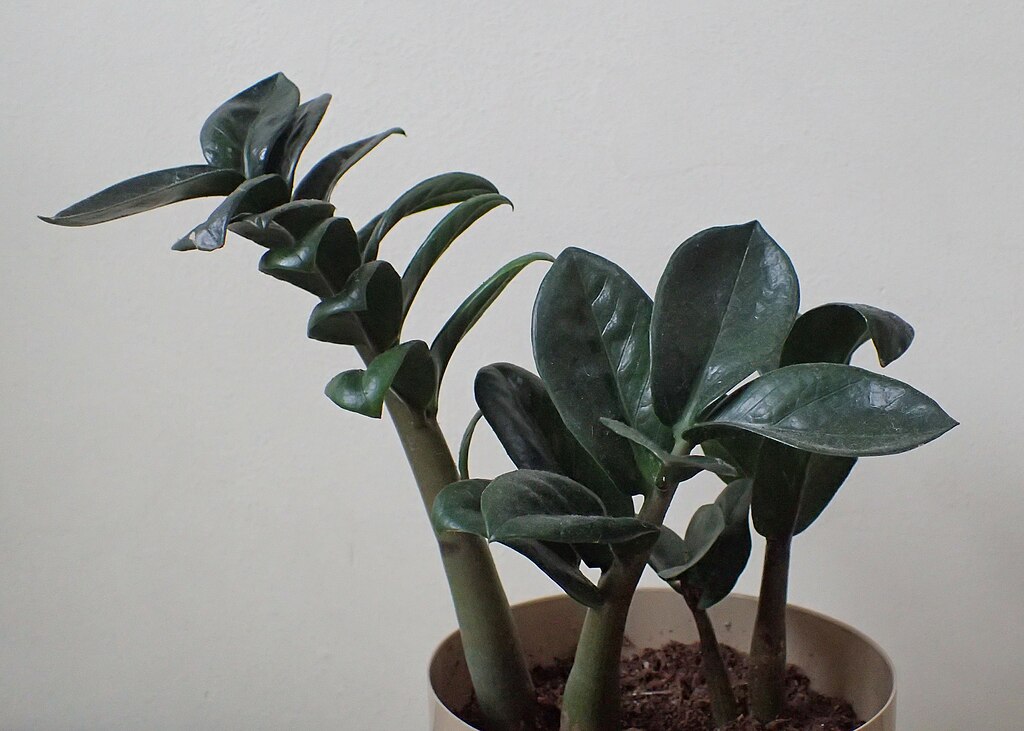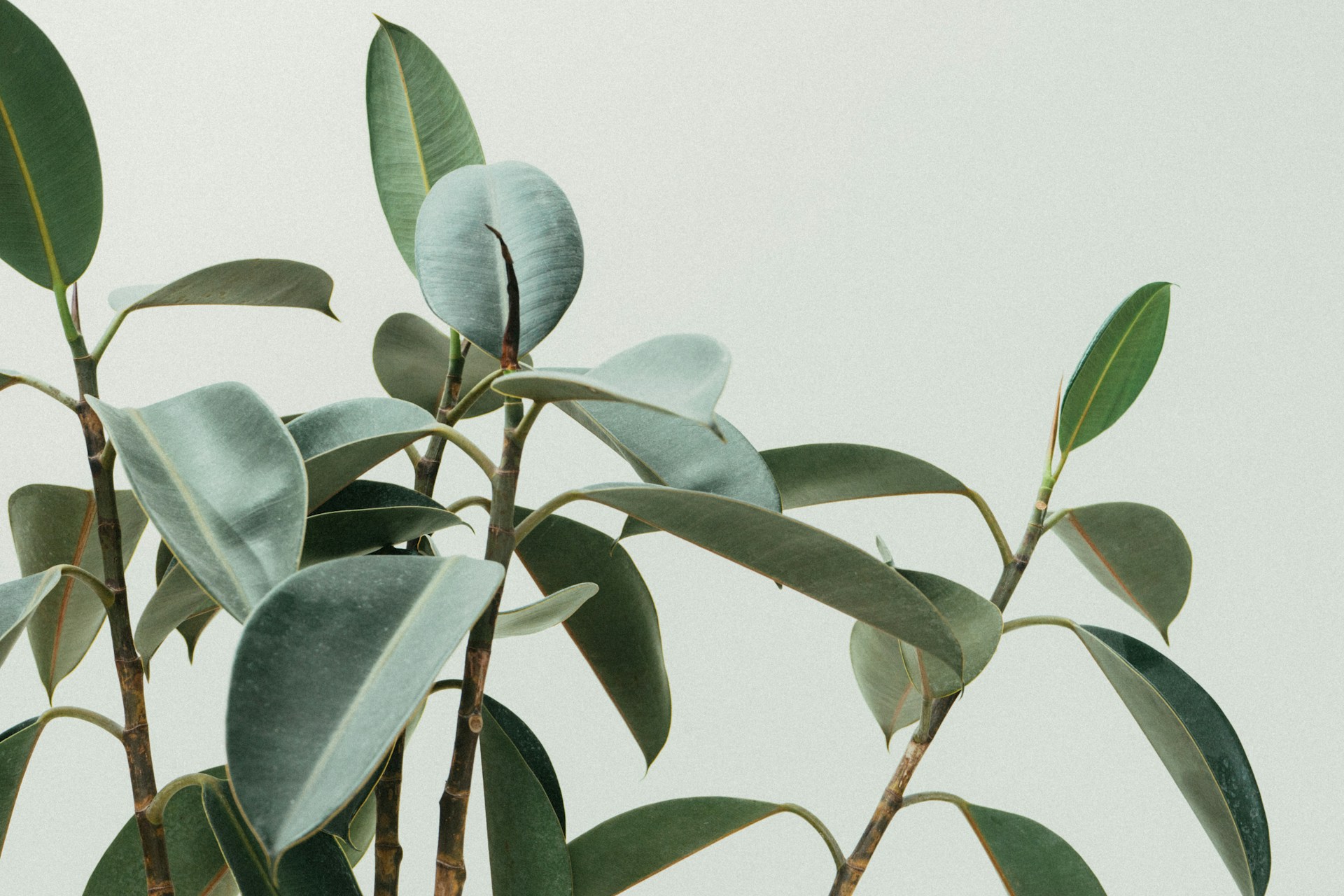- What is a ZZ plant?
- ZZ Plant Benefits
- What makes ZZ Plants Special?
- Where to place your ZZ Plant?
- History and Cultural significance
- ZZ plant specifications
- ZZ plant Types and Varieties
- ZZ plant Care and Maintenance
- ZZ plant Propagation
- Plant Problems in ZZ Plants
- Common Misconceptions about ZZ Plants
- Final Thought and Personal View
What is a ZZ plant?
The ZZ plant has an ancient pedigree, and some believe it even predates dinosaurs. Its scientific name, Zamioculcas, emphasizes its likeness to specific forms of cycads that were common throughout the Mesozoic Era.
Because of its unique traits, the ZZ plant has received several nicknames – Eternity Plant, Zanzibar Gem, and Fat Boy Plant.
- “Eternity Plant” because of its near-indestructibility and minimum maintenance requirements.
- “Zanzibar Gem” comes from Zanzibar, an island off the coast of East Africa.
- “Fat Boy Plant” refers to thick, rhizomatous subterranean stems that store water and nutrients, allowing them to tolerate neglect.
While ZZ plants are typically safe for humans and dogs, various parts of the plants contain calcium oxalate crystals, which can cause gastrointestinal distress if consumed. So it's still better to keep them out of the reach of curious dogs and small children.
ZZ Plant Benefits
The ZZ plant, a living witness to antiquity and a sign of good luck, offers much more:
- Master of Air Purification
- Low-light is not a Problem
- No watering, no problem
- Durability
- Attractive Foliage
◼Master of Air Purification
ZZs can help eliminate common contaminants from indoor air, such as formaldehyde and benzene, resulting in a healthier atmosphere.
◼Low-light is not a Problem
Unlike many houseplants, the ZZ plant thrives in low-light environments, even in dark, unnatural places in your house or office.
◼No watering, no problem
It can withstand periods of neglect and infrequent watering, making it an excellent choice for busy plant owners or those new to plant motherhood.
◼Durability
ZZ plants have tough personalities, so much so that they can withstand poor lighting, infrequent watering, and even occasional cold drafts. Because of their versatility, they may be used in various interior settings.
◼Attractive Foliage
ZZ plant boasts beautiful, dark green, glossy leaves that add a touch of elegance and sophistication to any space. They maintain their good looks for a long time, requiring minimal cleaning.
What makes ZZ plants Special?
◼Positive Appeal
With glossy evergreen foliage, ZZ plants give an idea of prosperity. The ZZ plant has lovely, dark green, glossy leaves that stay in good condition for long periods of time.
◼Spathes are not Flowers
The ZZ plant does not yield real blooms. Instead, it occasionally develops a spathe, which is a modified leaf that contains small yellow flowers. These are not particularly visible and frequently go missing.
Where to place your ZZ Plant?
◼ Boosts Positive Energy Flow:
◼ ZZ Plant’s Favorite Zones:
Based on Vastu principles, zones with positive energy flow may be good for ZZ plants. This includes:
The North Zone governs mental clarity and serenity of mind. Vastu suggests that placing a ZZ plant here might be good.
The East Zone represents new beginnings and spiritual progress. A ZZ plant in the east zone might meet these criteria.
History and Cultural significance
ZZ plants are Zanzibar natives, an island off the coast of East Africa.
According to these cultures, the ZZ plant represents prosperity and good fortune. In the home, its upright growth pattern and glossy leaves are believed to attract positive energy.
ZZ plant specifications
What’s fascinating about ZZ plants? Each plant has its unique leaf pattern and shape! Their lustrous foliage, ranging from deep green to practically black, provides an air of grandeur to any indoor space.
And here’s the kicker: they may range in size from compact, tiny examples ideal for modest areas to enormous, luxuriant plants that draw attention. Consider a collection of ZZ plants of all sizes and species, creating a lush and vivid sanctuary right in your own home—it’s like having a botanical wonderland inside!
| Botanical Name | 🍀 Zamioculcas Zamiifolia 🍀 |
|---|---|
| Color |
|
| Size |
|
| Origin | 🌍 ZZ plants are Zanzibar natives, an island off the coast of East Africa 🌴 |
| Flowering |
|
| Pattern | 🌿 The original ZZ plant’s leaves are of a solid dark green color. 🌱 The unusual ‘Zenzi’ variety features a variegated pattern with silvery-green streaks around the borders of the dark green foliage. |
| Planting Season |
|
ZZ plant Types and Varieties
There aren’t many different types of ZZ plants, but there are a few cultivated variants that have some unique qualities. Listed below are the most popular ones:
◼Classic ZZ Plant (Zamioculcas Zamiifolia)
This is the most popular form of ZZ plant, with its distinctive heart-shaped, brilliant green leaves. It is a low-maintenance and flexible variety, ideal for novices.

◼ZZ Raven (Zamioculcas Zamiifolia 'Raven')
This variety boasts magnificent, almost black foliage that provide a dramatic touch to any setting. It retains the basic ZZ plant’s low-maintenance requirements.

◼ZZ Zenzi (Zamioculcas zamiifolia 'Zenzi')
This dwarf variant is a smaller version of the original ZZ plant, at about 6-12 inches (15-30 cm) tall. It features lovely dark green foliage with silvery-green variegation along the margins, giving it a distinctive and appealing choice.

◼ZZ Variegated (Zamioculcas zamiifolia 'Variegata')
This unusual species has lovely variegation on its leaves, with splashes of white, yellow, or cream accenting the basic green. It’s a sluggish grower, but a popular choice among ZZ plant fans. Keep in mind that variegated ZZ plants may demand somewhat greater light than their all-green counterparts to preserve their variegation.

ZZ plant Care and Maintenance
Unlike other low-maintenance indoor plants the ZZ plant grows slowly, producing only a few new leaves every year. However, its delayed growth adds to the minimal care requirements. Take a look at this full guide for keeping your ZZ plant growing all year:
◼Lighting and Placement 🌤
For Spring and Summer:
ZZ plants enjoy strong indirect sunshine. An east-facing window with morning sunlight is good. Avoid intense, direct sunlight, since it can burn the foliage. You may determine their light requirements by examining their growth: poor growth or a leggy look suggests insufficient light.
For Fall and Winter:
As natural light decreases, try to stay in the same position. However, if the window receives much less light during these seasons, try supplementing with grow lights placed a few inches above the plant for 10-12 hours each day.
◼Watering💦
For Spring and Summer:
Water your ZZ plant when the top inch or two of the soil is dry to the touch. Water thoroughly until the water drains out of the drainage holes, but don’t let the plant rest in it.
Keep in mind that they would rather not be watered at all than overwatered.
For Fall and Winter:
Reduce watering when the plant enters semi-dormancy. Watering every two to three weeks may be adequate, but it should be modified according to soil dryness. Feel the top inch of soil; if it’s damp, avoid watering.
◼Temperature
◼Humidity
◼Fertilizer
For Spring and Summer: A gentle feeding throughout the growing season (spring and summer) using a balanced liquid fertilizer diluted to half strength is adequate. Avoid over-fertilization, which might result in discolored leaf tips. You can fertilize once a month at this time.
For Fall and Winter: Fertilize less regularly throughout the fall and winter, possibly once every 2-3 months, or skip altogether depending on the plant’s development.
◼ Repotting
Repot your ZZ plant only after its roots have outgrown the pot and become pot-bound. Signs include roots around the container or pushing up through the dirt. Overall, repotting every two to three years.
◼Soil
Choose a well-draining potting mix. A commercial cactus or succulent mix works well, but you can make your own by combining potting soil, perlite, and, if desired, orchid bark or coco coir for additional drainage.
◼Cleaning
No substantial cleaning is necessary, however, dust may be removed by wiping the ZZ plant leaves with a damp cloth.
◼Pruning
Pruning is not required, although it can help maintain a clean appearance. You can prune discolored or damaged leaves as well as cut leggy stems. Prune when needed, any time of the year.
Ensure the following tips if pruning:
- The pruning tool should be sharp and sterilized. You do not want infections to pass on to your plant from other
- Remove the leaves entirely if they are damaged or mushy.
ZZ plant Propagation
◼By dividing
◼By leaf cutting
This approach has a lower success percentage than division, but there is some success. Give it a try, and let us know how it goes.
- Choose a healthy leaf with a short stem portion (node).
- Plant it in a container of wet, well-drained soil.
- Cover the pot with a plastic bag to keep it damp and offer strong, indirect light.
Rooting might take months.
Plant Problems in zZ Plants
◼Watering Issues
One common issue that many plant owners face is leaf drop and yellowing. To prevent this, it’s important to maintain a regular watering routine. Make sure to water your plants consistently, allowing the soil to dry out slightly between each watering session. This will help keep your plants healthy and vibrant.
◼Light and Environmental Conditions
Inadequate Lighting: Insufficient light can hinder plant growth and lead to spindly stems. Ensure your plant receives ample, indirect sunlight.
Chilly Breezes: Being exposed to drafts can lead to leaves turning yellow. Shield your plant from cold drafts.
Arid Conditions: Dry air can cause the tips of leaves to turn brown. Boost humidity levels, especially during the winter months.
◼Pests and Diseases
To care for ZZ plants from pests and diseases:
- Be cautious of pests such as mealybugs, spider mites, and aphids. In case of infestation, use insecticidal soap or neem oil for treatment.
- Prevent fungal infections by improving air circulation and reducing humidity.
- Remove any leaves affected by bacterial leaf blight and avoid overhead watering.
- While viral diseases are rare, avoid bringing infected plants home and practice good hygiene. Stay proactive and attentive to keep your ZZ plant healthy.
Common Misconceptions about ZZ Plants
The ZZ plant does not yield real blooms. Instead, it occasionally develops a spathe, which is a modified leaf that contains small yellow flowers. These are not particularly visible and frequently go missing.
Final Thought and Personal View
The ZZ plant’s ancient heritage, unique nicknames, low-light tolerance, sluggish growth with periodic spurts of new leaf, appealing evergreen look, and potential symbolic value make it an unusual and intriguing houseplant.
Zamioculcas zamiifolia has its own pros and cons, you just have to keep the plant out of the reach of curious dogs and small children since the ZZ plant can upset the stomach when consumed.
Green love to you. Keep smiling. Ciao.






